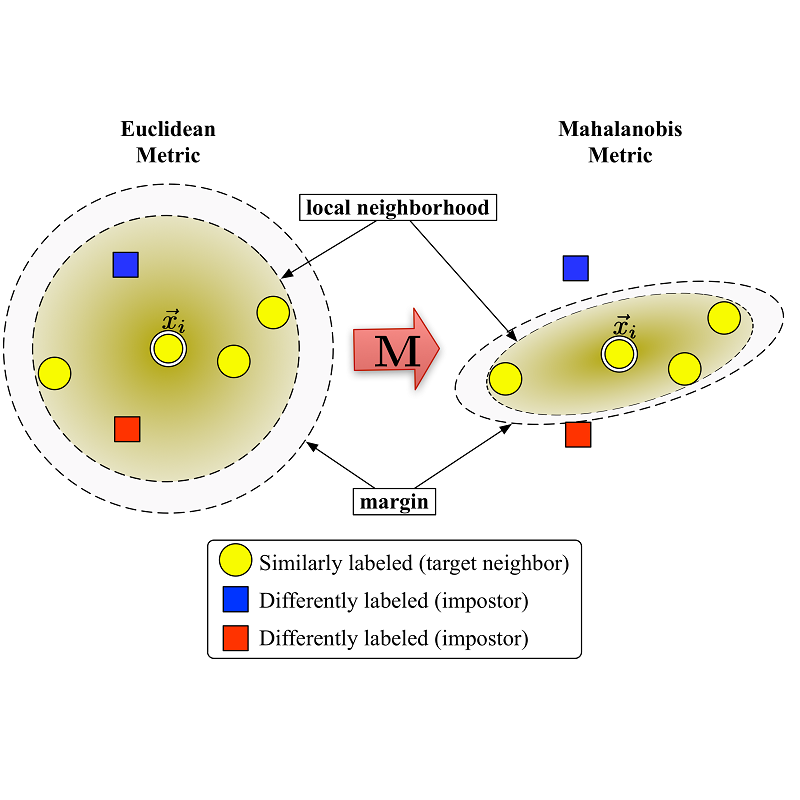During the training of networks for distance metric learning, minimizers of the typical loss functions can be considered as "feasible points" satisfying a set of constraints imposed by the training data. To this end, we reformulate distance metric learning problem as finding a feasible point of a constraint set where the embedding vectors of the training data satisfy desired intra-class and inter-class proximity. The feasible set induced by the constraint set is expressed as the intersection of the relaxed feasible sets which enforce the proximity constraints only for particular samples (a sample from each class) of the training data. Then, the feasible point problem is to be approximately solved by performing alternating projections onto those feasible sets. Such an approach introduces a regularization term and results in minimizing a typical loss function with a systematic batch set construction where these batches are constrained to contain the same sample from each class for a certain number of iterations. Moreover, these particular samples can be considered as the class representatives, allowing efficient utilization of hard class mining during batch construction. The proposed technique is applied with the well-accepted losses and evaluated on Stanford Online Products, CAR196 and CUB200-2011 datasets for image retrieval and clustering. Outperforming state-of-the-art, the proposed approach consistently improves the performance of the integrated loss functions with no additional computational cost and boosts the performance further by hard negative class mining.
翻译:在远程计量学习网络培训过程中,可以将典型损失功能的最小化视为满足培训数据所施加一系列限制的“可行点”,满足培训数据所施加的一套限制。为此,我们将远程计量学习问题重新定位为寻找一套可行的制约点,即培训数据的嵌入矢量满足理想的阶级内部和阶级间接近要求;由这套制约因素引发的可行点表现为只对特定样本(每类样本)培训数据实施近距离限制的宽松可行套件的交叉点。然后,可行的点问题将通过将预测交替到这些可行的套件来大致解决。这种方法引入一个正规化术语,并导致将典型的损失功能最小化,同时进行系统的分批构建,在这些批中,培训数据的嵌入量只能包含每类的样本,以某些迭代相匹配;此外,这些特定样本可被视为班级代表,允许在批量建设期间有效利用硬级采矿。拟议技术适用于公认的损失,并通过对斯坦福在线产品、CAR196和CUB200-2011数据集进行评估,以尽量减少典型的损失功能,同时进行系统分批次构建一个典型的分类结构,在这些系统中,这些组限制,这些组限制,这些组装将持续进行一定成本计算,从而进一步改进推进的升级。




